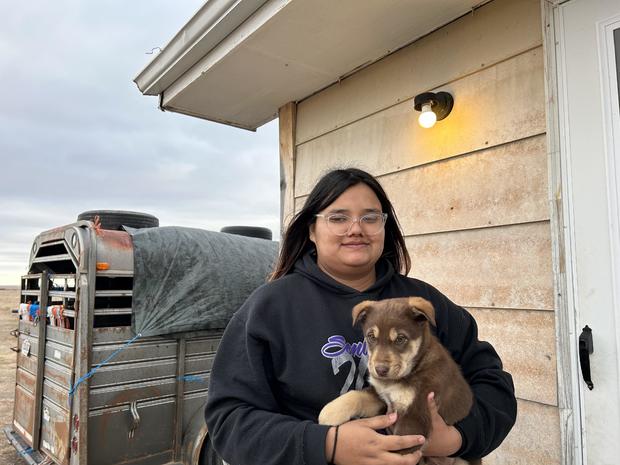HISLE, S.D. — Katherine Goodlow, a 20-year-old member of the Lower Brule Sioux Tribe, has witnessed the untimely deaths of numerous individuals in her community.
Having lost six friends and acquaintances to suicide, two to car accidents, and one to appendicitis, in addition to four relatives who passed away in their 30s or 40s from various causes, including liver failure, Goodlow is no stranger to tragedy. She recently mourned the loss of a 1-year-old nephew as well.
Reflecting on the prevalent issue of premature mortality among Native American youth, Goodlow expressed the profound impact of these losses, emphasizing that while such tragedies may be somewhat normalized within the community, the pain intensifies with each passing.
Despite the grim reality of early deaths within Native American populations, there remains a stark contrast in life expectancy compared to white Americans. Data from the Centers for Disease Control and Prevention reveals that Native Americans typically pass away at a median age 14 years younger than their white counterparts.
In South Dakota, this gap is even more pronounced, with Indigenous residents succumbing to death at a median age of 58, a staggering 22 years earlier than white South Dakotans.
Dr. Donald Warne, a physician and co-director of the Johns Hopkins Center for Indigenous Health, sheds light on the prevalent health conditions and accidents leading to the premature demise of Native Americans. However, he underscores that the root causes of this disparity lie in social and economic factors rather than solely in healthcare provision.
Warne advocates for a holistic approach that goes beyond medical interventions, emphasizing the importance of community-based preventive measures such as case management, parenting classes, and home visits. He asserts that addressing these underlying issues necessitates a comprehensive investment in social support systems and resources.
While medical services like the Indian Health Service play a crucial role, Warne asserts that a broader focus on preventive strategies and community empowerment is essential to combatting the systemic challenges contributing to early deaths among Native Americans.
Programs like Family Spirit, developed by the Johns Hopkins center, exemplify the community-driven initiatives that aim to improve health outcomes for Indigenous mothers and children. Through education, resource connection, and cultural integration, these programs play a vital role in supporting Native families and addressing prevalent health challenges.
The narrative of premature deaths within Native American communities extends beyond medical conditions to encompass factors like drug overdoses, chronic diseases such as diabetes, and disproportionately high rates of infant and maternal mortality. The somber reality is reflected in the obituaries from establishments like the Sioux Funeral Home, which chronicle the loss of community members across all age groups.
Misty Merrival, a staff member at the funeral home, attributes these premature deaths to poor living conditions, including food insecurity, inadequate housing, and limited access to essential resources. Inspired by these challenges, Merrival emphasizes the importance of personal well-being and mutual support as a means of resilience and prevention within her own family.
The complex web of factors contributing to early deaths among Native Americans encompasses not only healthcare disparities but also historical trauma, systemic racism, and socioeconomic challenges. While there are existing programs and initiatives aimed at addressing these issues, accessibility barriers and resource limitations hinder their impact.
Efforts led by organizations like Siċaŋġu Co on the Rosebud Reservation in South Dakota exemplify a multifaceted approach to community well-being, encompassing initiatives for cultural preservation, youth development, financial education, and food sovereignty. By fostering a comprehensive vision of health and prosperity, these programs aim to empower individuals and communities towards a brighter future.
In conclusion, the imperative to address the root causes of premature deaths among Native Americans calls for a collaborative and multifaceted approach that prioritizes community well-being, cultural revitalization, and equitable access to resources. By amplifying voices like Katherine Goodlow’s and advocating for systemic change, there is hope for a future where Native communities can thrive and overcome the challenges that have plagued them for generations.
